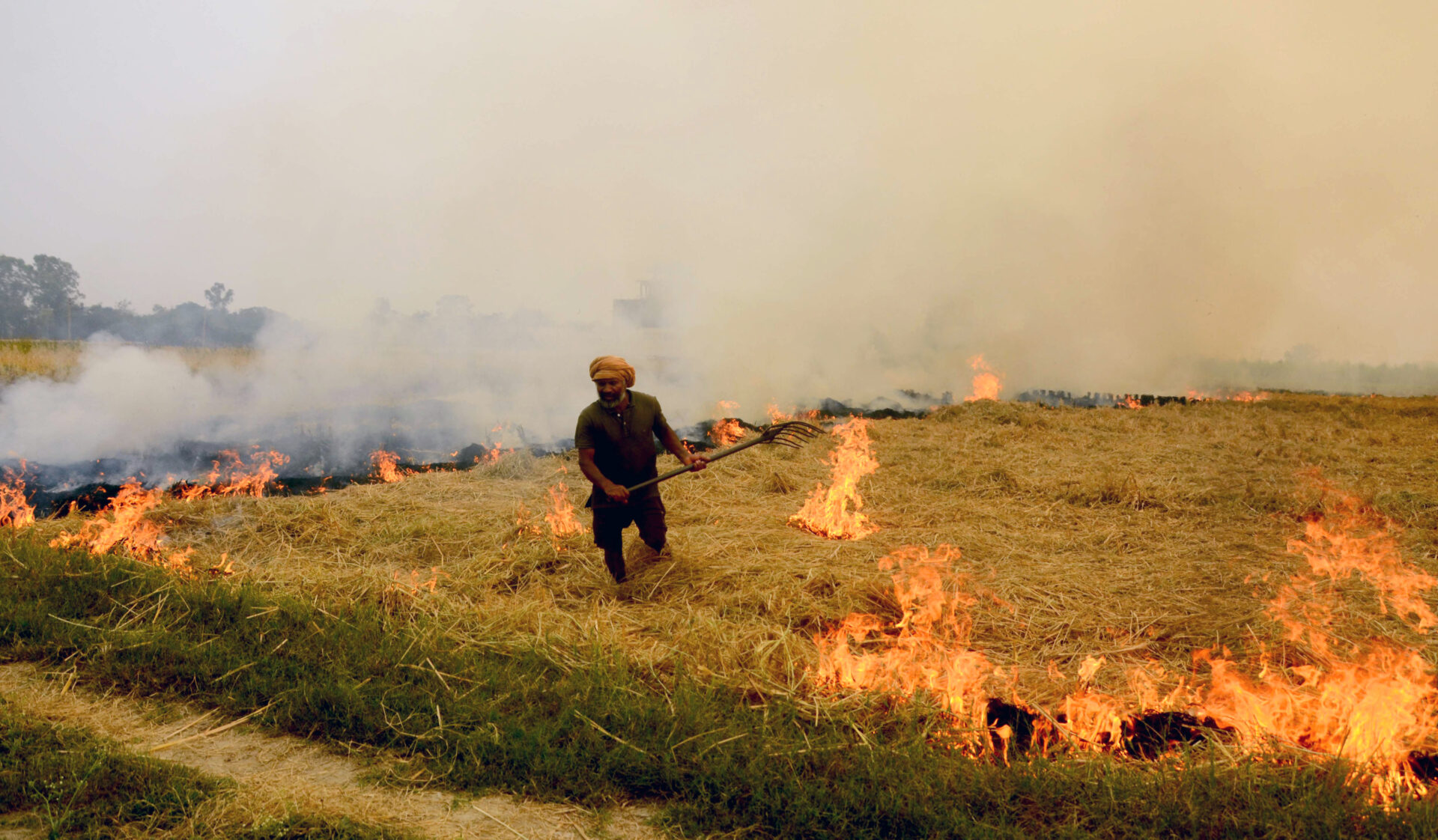While the Chief Justice is right that a ban on farm fires cannot be enforced, the
Supreme Court can definitely order that the Groundwater Preservation Act be repealed.
In late 2022, the Supreme Court dismissied a petition seeking a ban on farm fires, with
Chief Justice D.Y. Chandrachud asking the petitioner, “So, we ban it? You think, it is
going to stop then? Can we enforce such a ban against every farmer across Punjab and
Uttar Pradesh? Let’s have some genuine solutions.” Just days earlier, the Supreme
Court had refused to grant an urgent hearing to another petitioner challenging the Delhi
government’s ban on fireworks. In that case, the Supreme Court stated, “Let people
breathe clean air…spend your money on sweets.”
The hope that banning fireworks during Diwali would result in clean air in Delhi even as
farmers in Punjab were allowed to burn the crop stubble in their fields without
interference calls for a proper analysis of various sources of smoke. Although smoke
contains carbon dioxide, carbon monoxide, and other gases and particulate matter, one
of the main ingredients of smoke is carbon dioxide, and it is reasonable to assume that
comparing the amount of carbon dioxide released by various sources will tell us about
the quantity of smoke that originated from various sources.
According to the Delhi Statistical Handbook published by the Directorate of Economics
and Statistics of the Delhi government, a total of 693,000 metric tonnes of petrol and
599,000 metric tonnes of diesel were consumed in Delhi in the year 2021-2022. After
converting these values to litres, and using the values of 2.7 kg of carbon dioxide
released per litre of diesel and 2.3 kg for a litre of petrol, it turns out that the amount of
carbon dioxide released by vehicular traffic in the Delhi National Capital Region
averages to a little more than 11,000 tonnes a day.
This number pales in comparison to the amount of carbon dioxide released by crop
stubble burnt by farmers in Punjab. Estimates have put the amount of crop stubble burnt
in Punjab to approximately 23 million tonnes. Using numbers consistent with those used
in a study by scientists at Sharda University, the 23 million tonnes of stubble burnt in
Punjab release more than 33 million tonnes of carbon dioxide. That is more than 1.1
million tonnes of carbon dioxide a day during the crop-burning season given that most
of the burning takes place within a one-month span starting towards the end of October.
The amount of smoke generated per day by farm fires in Punjab is a hundred times the
amount of smoke generated by vehicular traffic on an average day in Delhi.
As for fireworks, which is the most common target of those in power, every kilogram of
fireworks releases a little less than half a kilogram of carbon dioxide. If we estimate the
number of households in Delhi NCR to be 8 million (the actual number is lower), and
each household burnt a couple of kilograms of fireworks, it would still amount to no ore than 8,000 tonnes of carbon dioxide. Even if all of this was concentrated on the
day of the Diwali, the amount of smoke produced by the fireworks in a day would be
significantly lower than the amount of smoke produced by vehicular traffic on an
average day, and way below even 1% of the amount of smoke produced by the Punjab
farm fires.
When the article identifying the reason for smoke from Punjab’s farm fires reaching
Delhi in recent years was published in The Sunday Guardian in 2017, it was also sent to
the office of Delhi Chief Minister Arvind Kejriwal. Although officials in the Kejriwal
government acknowledged the email and promised action, no action has been taken for
nearly six years. The real reason for the smoke reaching Delhi in recent years is that
Punjab’s Preservation of Subsoil Water Act of 2009 has forced farmers to delay the
sowing of paddy, which in turn has resulted in the timing of the post-harvest farm fires
coinciding with the post-monsoon wind direction that has started blowing into Delhi. As
both Delhi and Punjab are ruled by the Aam Aadmi Party, it would have been easy for
the Arvind Kejriwal government to work with the Punjab government and get this law
repealed. Yet, nothing has been done on this front for several years leading to a
dangerous situation. Instead, the Delhi government has targeted the festival of Diwali
and imposed a ban on fireworks which would have almost no effect on the amount of
smoke.
Targeting Diwali fireworks instead of the farm fires in Punjab is clearly not only a case of
missing the forest for the trees as can be seen from the numbers, but is also a very
foolish approach. Clearly, the issue of farm fires must be tackled. While the Chief
Justice is right that a ban on farm fires cannot be enforced, the Supreme Court can
definitely order that the Groundwater Preservation Act be repealed. Although this will
not completely solve the issue as there will still be smoke in Punjab instead of Delhi, it
will mitigate the problem to a large extent. The Central government too can do its part
and set a deadline for the procurement of food grains before the middle of September.
This will apply pressure on the Punjab government to repeal the law delaying the
planting of paddy.
The writer can be reached at arvindk@uchicago.edu

